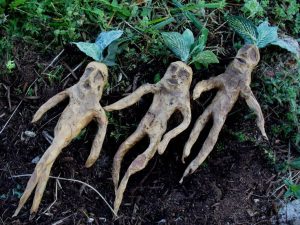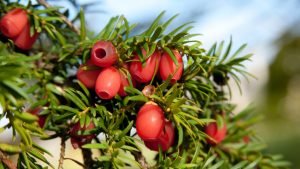Greetings, daring explorers of the arcane green path! Today, we’ll uncover the secrets of ancient and powerful plants, the legendary botanical allies that have danced with witches throughout history. From the deathly Belladonna to the enigmatic Mandrake, each plant offers a potent brew of mystery and magic. Let’s embark on a journey through the shadows of plant lore!
1. Belladonna: The Deadly Nightshade
Belladonna, aptly named ‘Beautiful Lady’ or ‘Deadly Nightshade,’ is a plant of potent power and danger. Used by witches in the olden days for its hallucinogenic properties, it’s closely associated with divination and astral projection. Remember, Belladonna is highly toxic, so its use is more symbolic and historical, rather than practical in modern witchcraft.
2. Mandrake: The Human Root

Mandrake, with its humanoid root, has long been shrouded in myth and magic. Used for protection, fertility, and prosperity spells, it was also believed to possess potent aphrodisiac properties. However, handle it with care – Mandrake is another plant steeped in dangerous toxins.
3. Wormwood: The Spirit Summoner
Wormwood, a key ingredient in the legendary brew Absinthe, was often used for spirit communication and divination rituals. Its strong association with the spirit realm makes it a perfect addition to Samhain altars. Remember, Wormwood should never be ingested in large quantities due to its toxic thujone content.
4. Henbane: The Witch’s Brew
Henbane was another staple in the ancient witch’s garden, used for inducing visions and astral travel. However, like many of our legendary herbs, Henbane is highly toxic and should be used symbolically rather than practically.
5. Yew: The Tree of Death

The Yew tree, often found in graveyards, is a symbol of death and rebirth. Its berries and needles are extremely poisonous, but it’s revered in spiritual practice for its association with transformation and ancestral communication.
6. Datura: The Devil’s Trumpet
Datura, also known as Devil’s Trumpet, was used for its hallucinogenic effects and its ability to induce prophetic dreams. However, due to its high toxicity, it’s another plant to appreciate from a safe distance.
In conclusion, while these legendary plants offer a fascinating glimpse into the history of witchcraft, they remind us of the importance of respecting the potent forces of nature. These are not herbs for the amateur witch or the faint-hearted, but rather, powerful allies to be respected and approached with caution.
So, as we journey through the shadows of the plant kingdom, may your steps be steady, your heart be brave, and your spirit be wise. Until our next adventure, dear readers, remember: knowledge is the most potent magic of all.
